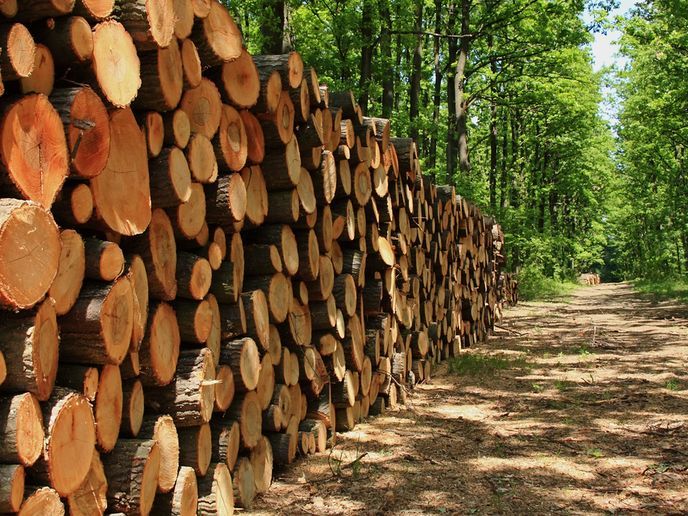Economics of Wood Pyrolysis for Sustainable Energy
- By Beston Charcoal
- •
- 22 Feb, 2024
- •
In the pursuit of sustainable energy solutions, wood pyrolysis has emerged as a promising technology with the potential to transform biomass into valuable resources such as biochar, bio-oil, and syngas.

Understanding Wood Pyrolysis:
Wood pyrolysis is a thermochemical process that involves heating wood biomass in the absence of oxygen to produce biochar, bio-oil, and syngas. The process typically occurs in a reactor or kiln, where controlled heating transforms the biomass into its primary components through a series of chemical reactions. The key products of wood pyrolysis include:
Biochar: A carbon-rich solid residue that can be used as a soil amendment to improve fertility, sequester carbon, and enhance agricultural productivity.
Bio-oil: A liquid product rich in organic compounds, which can be refined and upgraded for use as biofuel or chemical feedstock.
Syngas: A mixture of hydrogen, carbon monoxide, and other gases, which can be used for heat and power generation, or further processed into synthetic fuels and chemicals.
Economics of Wood Pyrolysis:
The economics of wood pyrolysis are influenced by various factors, including feedstock availability, technology costs, product prices, and regulatory incentives. Here's a breakdown of the key economic considerations:
Feedstock Costs:
The cost of feedstock, primarily wood biomass, is a significant factor in the economics of pyrolysis. The availability and cost of feedstock depend on factors such as local forestry resources, agricultural residues, and waste wood streams. Sustainable sourcing practices and efficient supply chains can help minimize feedstock costs and ensure the long-term viability of pyrolysis operations.
Technology Investment:
Investing in pyrolysis technology, including reactors, kilns, and processing equipment, represents a substantial upfront capital expenditure. The cost of technology varies depending on factors such as scale, efficiency, and automation. Advances in pyrolysis technology, including innovative reactor designs and process optimization, can reduce capital costs and improve overall economic viability.
Operational Costs:
Operational costs associated with wood pyrolysis include energy inputs (e.g., heating fuel), labor, maintenance, and overhead expenses. Efficient operation and process optimization are essential for minimizing operational costs and maximizing profitability. Automation and remote monitoring technologies can help streamline operations and reduce labor requirements, improving cost-effectiveness.
Product Yields and Prices:
The yields and prices of biochar, bio-oil, and syngas significantly impact the economic viability of wood pyrolysis. The composition and quality of the products depend on factors such as feedstock type, pyrolysis conditions, and post-processing techniques. Market demand, regulatory policies, and competition from conventional energy sources also influence product prices. Diversifying product streams and targeting high-value markets can enhance revenue potential and profitability.
Revenue Streams:
Wood pyrolysis offers multiple revenue streams from the sale of biochar, bio-oil, syngas, and co-products. Additionally, revenue opportunities may arise from carbon offset credits, renewable energy incentives, and environmental markets. Strategic partnerships with utilities, industries, and agricultural stakeholders can create synergies and unlock new revenue streams. Moreover, integrating pyrolysis with other biomass conversion technologies, such as gasification and anaerobic digestion, can optimize resource utilization and maximize economic returns.
Environmental Benefits and Externalities:
Beyond financial considerations, wood pyrolysis generates environmental benefits such as carbon sequestration, waste reduction, and greenhouse gas mitigation. The monetization of these environmental benefits through carbon markets, renewable energy credits, and ecosystem services can enhance the economic attractiveness of pyrolysis projects. Moreover, avoiding negative externalities associated with conventional energy production, such as air pollution and deforestation, adds value to pyrolysis as a sustainable energy solution.
Case Studies and Success Stories:
Several real-world examples demonstrate the economic viability and potential of wood pyrolysis for sustainable energy production:
Biochar Production for Agriculture:
In agricultural regions, wood pyrolysis facilities produce biochar from crop residues, forestry waste, and other biomass sources. The biochar is marketed as a soil amendment, offering benefits such as improved soil fertility, moisture retention, and carbon sequestration. By monetizing these agronomic benefits, biochar producers generate revenue while contributing to sustainable land management practices.
Bio-oil Refining and Upgrading:
In regions with established biofuel markets, wood pyrolysis facilities produce bio-oil for use as a renewable transportation fuel. The bio-oil undergoes refining and upgrading processes to remove impurities and enhance fuel properties. The refined bio-oil is blended with conventional fuels or processed into biodiesel, jet fuel, and other high-value products, creating economic opportunities in the renewable energy sector.
Syngas Utilization for Power Generation:
In industrial settings, wood pyrolysis facilities utilize syngas for combined heat and power generation. The syngas is combusted in gas engines or turbines to produce electricity and heat for on-site use or grid export. By displacing fossil fuels with renewable syngas, these facilities reduce greenhouse gas emissions and energy costs while generating revenue from electricity sales and renewable energy incentives.
Policy Support and Market Dynamics:
The economics of wood pyrolysis are influenced by policy support, market dynamics, and regulatory frameworks that incentivize renewable energy production, carbon mitigation, and sustainable development. Governments, utilities, and international organizations play a critical role in shaping the market environment through policies such as renewable energy mandates, carbon pricing mechanisms, and research and development funding. Market dynamics, including energy prices, technological innovation, and consumer preferences, also drive investment decisions and market competitiveness.
Conclusion:
Wood pyrolysis holds immense potential as a sustainable energy solution, offering economic benefits, environmental advantages, and energy security benefits. By harnessing the power of biomass resources through thermochemical conversion, pyrolysis contributes to a more resilient, low-carbon energy system. With ongoing advancements in technology, policy support, and market integration, wood pyrolysis is poised to play a significant role in the transition to a cleaner, more sustainable energy future.
